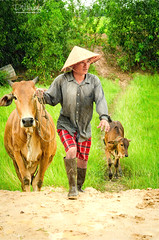Two die in two-car crash near Connel, Scotland
Friday, August 2, 2013
A man and a woman have been killed in a road traffic accident near Connel in the west of Scotland. Seven people, including three children, were also injured in the head-on collision on the A85 road in Argyll at approximately 1830 BST (1730 UTC) yesterday.
A 74-year-old female passenger of a blue Honda CRV and a 32-year-old male passenger of a blue Vauxhall Vectra died at the scene of the crash. The Vauxhall driver, a 32-year-old woman, was transported by helicopter to Glasgow’s Southern General Hospital, where she is reportedly in a critical albeit stable condition.
Three child passengers in the Vauxhall, aged fourteen, five and two, were taken to Oban Hospital and given treatment for minor injuries, as were the Honda’s 51-year-old female driver and two female passengers aged 49 and 46.
A Scottish Fire and Rescue Service spokesperson said hydraulic cutting equipment was used during rescue efforts. “Ambulance personnel and police officers worked closely with our team throughout the incident but sadly one passenger from each car lost their life”, the spokesperson continued. “The thoughts of all emergency responders who were at the scene will be with the casualties and their loved ones as they attempt to come to terms with what has happened.”
Police have appealed for potential witnesses to contact them.

